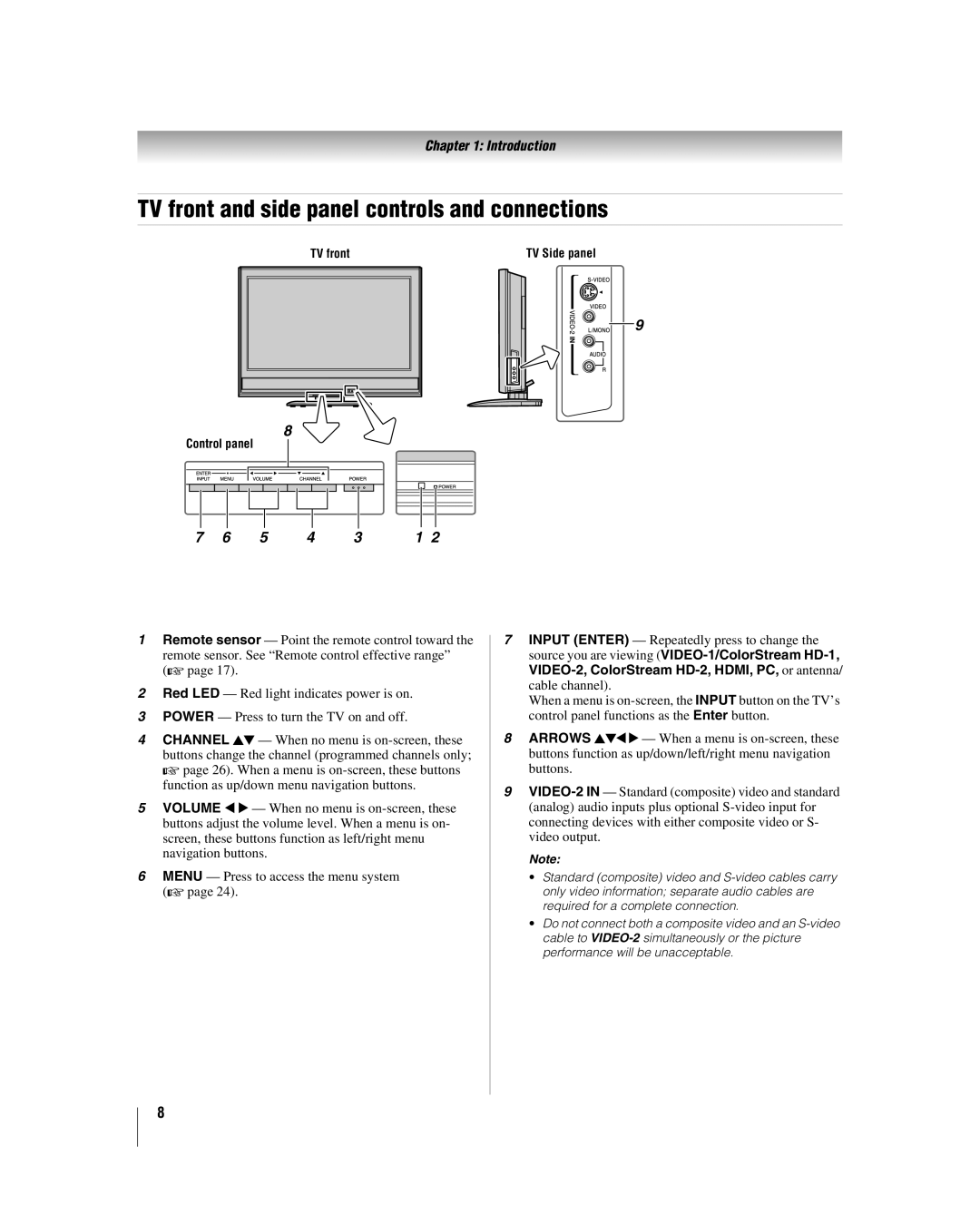
Chapter 1: Introduction
TV front and side panel controls and connections
TV front | TV Side panel |
|
|
|
|
9
8
Control panel
7 | 6 | 5 | 4 | 3 | 1 2 |
1Remote sensor — Point the remote control toward the
remote sensor. See “Remote control effective range” (- page 17).
2Red LED — Red light indicates power is on.
3POWER — Press to turn the TV on and off.
4CHANNEL Bb — When no menu is
buttons change the channel (programmed channels only; - page 26). When a menu is
5VOLUME C c — When no menu is
6MENU — Press to access the menu system (- page 24).
7INPUT (ENTER) — Repeatedly press to change the source you are viewing
When a menu is
8ARROWS BbC c — When a menu is
9
Note:
•Standard (composite) video and
•Do not connect both a composite video and an
8
